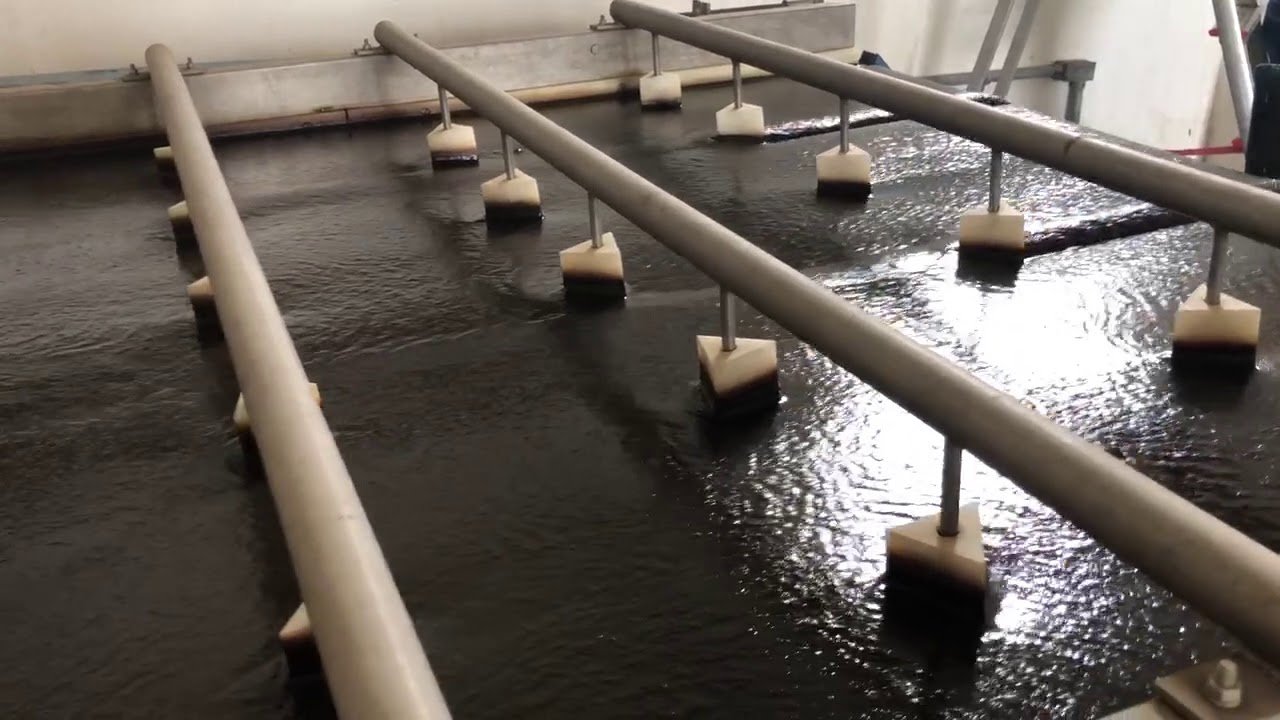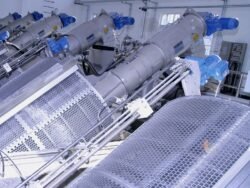Rotary Drum Filter Advantages And Disadvantages

Rotary Drum Filter Advantages and Disadvantages
A rotary drum filter is a form of mechanical filtration equipment used in various industries to remove particles from liquids. Its high efficiency and versatility make it a popular choice for operations ranging from wastewater treatment to the mining industry. However, like any technology, rotary drum filters come with their own set of advantages and disadvantages. This comprehensive article aims to elucidate both the positive and negative aspects of rotary drum filters, helping potential users make informed decisions.
Understanding Rotary Drum Filters
Before diving into the pros and cons, it’s crucial to understand how rotary drum filters function. Essentially, a rotary drum filter works by exposing a rotating horizontal drum that is partially submerged in a suspension or liquid. As the drum rotates, the liquid phases through the drum’s porous surface, leaving solid particles behind. The filtered liquid, or filtrate, is collected through a series of internal compartments and discarded or further processed.
Rotary drum filters can be made from a variety of materials including metal, plastic, or ceramic, depending on the specific application and type of slurry being filtered. The type and structure of the filter media can also vary, such as cloth, metal screens, or synthetic fibers, all chosen based on filtration requirements and the properties of the slurry.
Advantages of Rotary Drum Filters
1. Efficiency in Particle Removal
One of the key advantages of rotary drum filters is their high efficiency in separating solids from liquids. The continuous rotation allows for consistent and reliable separation, reducing the amount of solid content in the filtrate significantly. Filters can be designed to achieve different micron levels of filtration, making them adaptable to various industry requirements.
2. Low Operating Costs
Rotary drum filters are relatively cost-effective to operate, especially when compared to other filtration systems. The energy consumption is relatively low because the drum rotates slowly. Maintenance costs are also manageable as the components—such as the drum, drive system, and filter medium—are designed for robust, long-term performance.
3. Flexibility and Versatility
These filters are adaptable and can handle a variety of slurries and solids. Rotary drum filters can be configured for vacuum or pressure filtration, depending on the needs and nature of the operational setup. This adaptability makes them suitable for diverse applications, from wastewater treatment plants to pharmaceutical operations.
4. Continuous Operation
One of the substantial benefits of rotary drum filters is their ability to run continuously, which is especially advantageous for industrial processes requiring uninterrupted operation. No process downtime translates into higher productivity and throughput for businesses.
5. Relatively Compact Footprint
Compared to some large-scale filtration systems, rotary drum filters can be compact, especially when considering the volume of slurry they can process. This smaller footprint helps in reducing the need for extensive installation work and also saves on space, making it easier to incorporate into existing systems.
6. Scalability
Rotary drum filters can be scaled up or down to match the changing demands of the operation. They can handle small to very large volumes of slurry, meaning they can grow with the industry’s needs without requiring a complete overhaul or replacement.
7. Environmental Benefits
Due to their efficiency in removing solids from liquids, rotary drum filters can play a significant role in environmental protection. They can treat wastewater to a higher quality, reducing the environmental impact before the water is released back into natural water bodies or reused in different processes. This capability supports sustainability efforts and helps industries comply with stringent environmental regulations.
Disadvantages of Rotary Drum Filters
1. Initial Capital Cost
One of the primary drawbacks of implementing rotary drum filters is the initial capital expenditure. High-quality rotary drum filters and their associated infrastructure can be expensive to purchase and install, which might deter smaller businesses or those with limited budgets from opting for this solution.
2. Complexity in Maintenance
Though the operational costs are relatively low, rotary drum filters can require complex maintenance, primarily depending on the type and extent of solids being filtered. Replacing the filter media, addressing wear and tear on the drum, and ensuring that the drive mechanisms operate correctly all involve periodic maintenance from skilled personnel.
3. Limited to Certain Applications
While rotary drum filters are versatile, they aren’t ideal for all filtration needs. They may not be suitable for highly viscous slurries or systems where extremely fine filtration is required. Moreover, substances that can cause clogging or scaling might necessitate frequent cleaning or replacement of the filter media.
4. Potential for Fouling and Scaling
Over time, the filter media can become fouled or scaled, particularly when filtering slurries with sticky or challenging solid components. This issue necessitates periodic cleaning or even replacement of the filter media, disrupting continuous operation and adding to maintenance costs.
5. Specialized Skill Requirement
Rotary drum filters require specialized knowledge for optimal setup, operation, and maintenance. This requirement entails that operators and maintenance staff need to be adequately trained, potentially leading to higher personnel costs.
6. Sensitivity to Variations
Rotary drum filters can sometimes be sensitive to variations in slurry composition, solid load, and other operational parameters. This sensitivity can result in performance fluctuations and necessitates continuous monitoring and sometimes adjustments to maintain optimal performance.
7. Limited Pressure Handling
Unlike pressure filtration systems, rotary drum filters have restricted capacity when it comes to handling high-pressure situations. For industries requiring high-pressure filtration, alternative systems might be preferable.
Applications of Rotary Drum Filters
Wastewater Treatment
Rotary drum filters are widely used in wastewater treatment plants to remove biological and physical contaminants from the water. The continuous operation and efficiency make them suited for large-scale wastewater treatment, contributing to environmental sustainability.
Mining and Minerals
The mining industry utilizes rotary drum filters for dewatering mineral slurries and tailings. The robust construction and scalability are significant advantages, helping in separating valuable minerals from the waste material.
Pulp and Paper Industry
In the pulp and paper industry, rotary drum filters are used to remove pulp from the water. The filters help in reclaiming water and reducing waste, thereby contributing to cost savings and environmental conservation.
Food and Beverage Industry
In the food and beverage sector, rotary drum filters are used for applications such as juice clarification and sugar syrup filtration. The ability to handle different types of slurries makes them valuable in these settings.
Chemical and Pharmaceutical Industries
Rotary drum filters play a crucial role in chemical and pharmaceutical production by facilitating the removal of solid impurities from liquid chemical compounds and pharmaceutical extracts. This step is vital for maintaining product quality and meeting regulatory standards.
Case Study: Rotary Drum Filters in Wastewater Treatment
To better understand the practical implications and performance characteristics of rotary drum filters, consider a wastewater treatment plant processing municipal sewage.
Background
A municipal wastewater treatment facility was dealing with increasing volumes of sewage due to population growth. The objective was to enhance the filtration system to improve the quality of treated water and ensure compliance with environmental regulations.
Implementation
The facility decided to install rotary drum filters as part of the secondary treatment phase. Three large-scale rotary drum filters were integrated into the existing system to handle an increased inflow of sewage.
Results
-
- Improved Water Quality: The installation of rotary drum filters significantly improved the quality of treated water by efficiently removing suspended solids and organic matter. The treated water met the stringent regulatory standards, and the plant received positive feedback from environmental monitoring bodies.
- Improved Water Quality: The installation of rotary drum filters significantly improved the quality of treated water by efficiently removing suspended solids and organic matter. The treated water met the stringent regulatory standards, and the plant received positive feedback from environmental monitoring bodies.
-
- Operational Efficiency: The continuous operation of the rotary drum filters allowed for higher throughput and better handling of peak flows. This efficiency improved overall plant performance and reduced the need for operational downtime.
- Operational Efficiency: The continuous operation of the rotary drum filters allowed for higher throughput and better handling of peak flows. This efficiency improved overall plant performance and reduced the need for operational downtime.
-
- Cost Management: Although the initial capital expenditure for the installation was high, the long-term operational cost savings and reduced maintenance expenses balanced the investment. The filters’ durability and reliability contributed to a decrease in long-term costs.
- Cost Management: Although the initial capital expenditure for the installation was high, the long-term operational cost savings and reduced maintenance expenses balanced the investment. The filters’ durability and reliability contributed to a decrease in long-term costs.
-
- Environmental Impact: By enhancing the quality of the treated water, the plant significantly reduced its environmental footprint. The impact on local water bodies, in terms of pollution and ecosystem disruption, was minimized.
Challenges
Despite these successes, the wastewater treatment plant faced some challenges. For example, filter media required regular cleaning to prevent fouling and maintain performance. Additionally, operator training was essential to ensure optimal filter operation and maintenance.
Future Trends in Rotary Drum Filter Technology
Automation and Digitalization
The future of rotary drum filters lies in increased automation and integration with smart technologies. Sensors and IoT devices can monitor filter performance in real-time, predict maintenance needs, and optimize operations automatically. This advancement will further reduce costs and enhance efficiency.
Enhanced Filter Media
Research and development in filter media is ongoing, with a focus on materials that resist fouling and scaling. Innovations in nanotechnology and advanced synthetic materials could improve filtration performance and extend the lifespan of filter media.
Energy Efficiency
Energy consumption remains a critical concern. Future designs of rotary drum filters are likely to incorporate more energy-efficient components and systems. This development will not only reduce operational costs but also support sustainability goals.
Customization and Modular Design
Rotary drum filters with modular and customizable designs will provide industries with tailored solutions for specific applications. These flexible systems can be easily reconfigured or expanded as operational needs change.
Conclusion
Rotary drum filters offer numerous advantages, including high efficiency, low operational costs, versatility, and continuous operation. They are extensively used across various industries, contributing to improved environmental protection and operational productivity. However, they also come with some disadvantages, such as high initial capital costs, maintenance complexity, and sensitivity to operational variations.
Therefore, it is crucial for businesses and industries to carefully evaluate these factors when considering the implementation of rotary drum filters. By balancing the pros and cons, and staying informed about future trends and technological advancements, users can make informed decisions that align with their operational goals and sustainability objectives.



